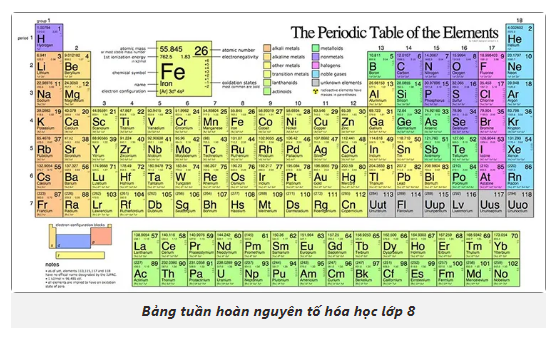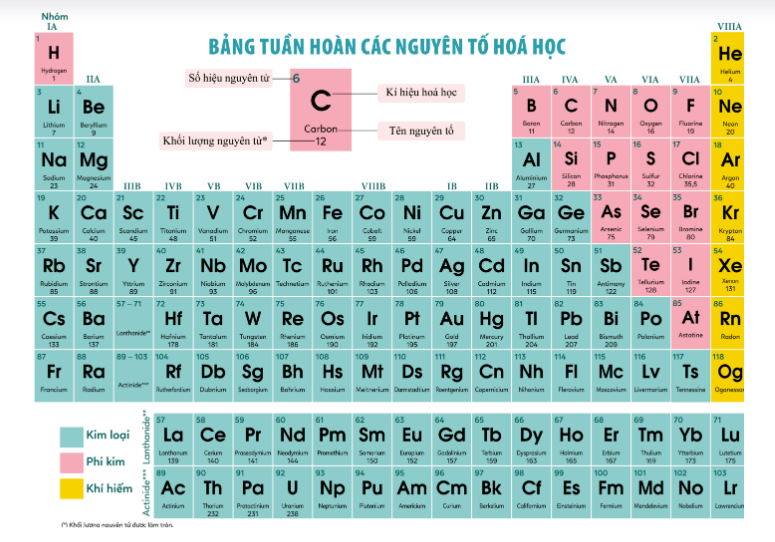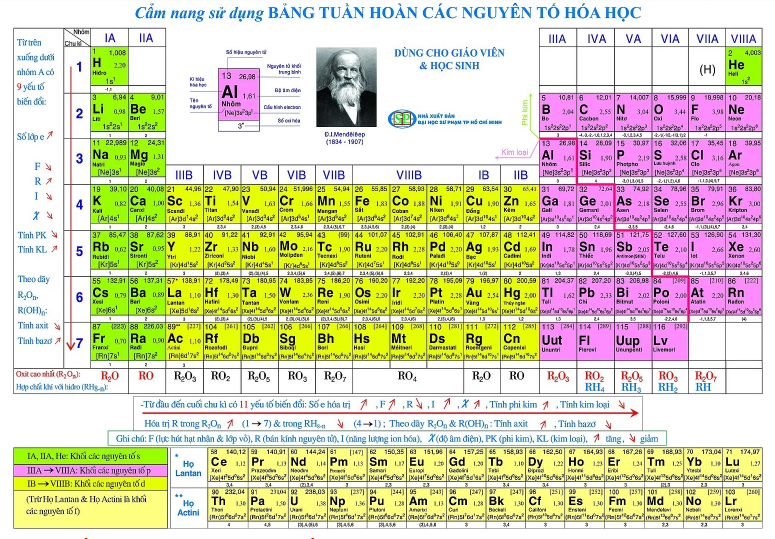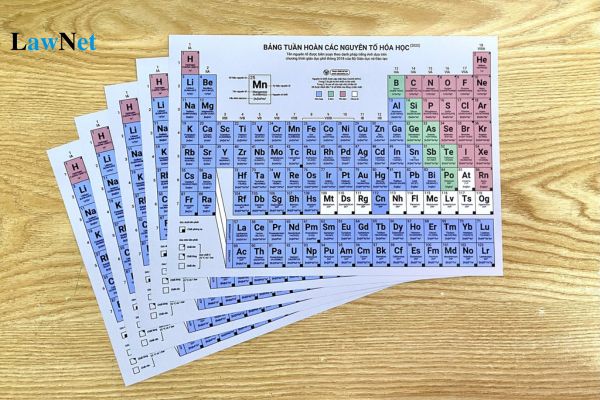Vietnam: What is the applicable Chemistry Periodic Table in 2025?
What is the applicable Chemistry Periodic Table in 2025?
The periodic table, fully known as the Periodic Table of Elements, is an arrangement of chemical elements based on atomic number, electron configuration, and their chemical properties. It was invented by Russian chemist Dmitri Mendeleev in 1869.
Periodic Table for 8th-grade students:

Periodic Table for 9th-grade students:
Periodic Table for 10th-grade students:
*The above information is for reference only./.

What is the applicable Chemistry Periodic Table in 2025? (Image from Internet)
What are the characteristics of the 10th-grade Chemistry curriculum in Vietnam?
Under Section 1 of the General Education Program for Chemistry issued together with Circular 32/2018/TT-BGDDT, the following provisions apply:
- Chemistry is a field of natural science studying the composition, structure, properties, and transformations of simple substances and compounds.
- Chemistry is closely integrated with both theory and experimentation, bridging other natural sciences such as physics, biology, medicine, and geology. Advances in chemistry are interconnected with new discoveries in the fields of biology, medicine, and physics. Chemistry plays an important role in life, production, contributing to socio-economic development.
- The achievements in chemistry are applied in fields such as materials, energy, medicine, biotechnology, agriculture, forestry, fishery, and many other areas.
- In the general education program, Chemistry is part of the natural science group at the upper secondary level, chosen by students based on career orientation, interests, and personal abilities. The subject of Chemistry equips students with core knowledge of chemistry and its applications in life, while also relating to many other educational fields.
- Along with Mathematics, Physics, Biology, Informatics, and Technology, Chemistry promotes STEM education, which is emphasized in many countries worldwide.
- The Chemistry curriculum is designed into topics to both consolidate content strands, develop knowledge and practical skills formed from lower levels, and help students gain deeper insights into the fundamental general knowledge of chemistry, serving as a basis for learning, working, and researching.
- Each academic year, students with career orientation requiring extensive chemistry knowledge choose three suitable study modules based on their interests and school conditions.
- These modules aim to fulfill deep differentiation requirements, helping students enhance knowledge and practical skills, applying learned knowledge and skills to solve real-world issues, and meeting career orientation requirements.
What are the perspectives on developing the 10th-grade Chemistry curriculum in Vietnam?
According to Section 2, the General Education Program for Chemistry issued with Circular 32/2018/TT-BGDDT:
The Chemistry curriculum fully complies with the regulations outlined in the overall program and, stemming from the subject's characteristics, emphasizes the following viewpoints:
[1] Ensuring Inheritance and Development
- The Chemistry curriculum inherits and promotes the advantages of the current program, absorbs experience in developing the curriculum from countries with advanced education systems globally and regionally, and approaches the achievements of educational and chemical science suitable to the cognitive level and psychological age of students, considering Vietnam's economic and social conditions.
- The Chemistry curriculum inherits and develops the educational contents of the Natural Science subject at the secondary level using a concentric structure combined with a linear structure to expand and enhance knowledge and skills for students.
At the secondary level, through the Natural Science subject, students become familiar with some basic chemistry knowledge primarily at a qualitative, visually descriptive level.
At the high school level, Chemistry focuses on equipping students with the foundational chemistry knowledge about the structure, properties, and applications of elements and compounds to enable them to explain the nature of chemical transformations at the required level.
[2] Ensuring Practicality
The Chemistry curriculum emphasizes practicality; avoids the tendency towards calculation; focuses on equipping students with conceptual tools and methods to use these tools, especially helping students gain experimental practice skills, apply chemical knowledge to explore and solve, to a certain extent, some real-world problems, addressing life requirements.
[3] Meeting Career Orientation Requirements
The Chemistry curriculum concretizes career-oriented educational goals. Based on determining the fields and technological processes requiring in-depth chemical knowledge, the curriculum selects core educational content and study modules, helping students delve deeper into chemical knowledge with ample practical applications, preparing for career orientation.
[4] Promoting Student Activeness
The educational methods of Chemistry contribute to promoting the activeness, initiative, and creativity of students to develop chemical competence and contribute to forming and developing core qualities and general capacities as stipulated in the overall program.

